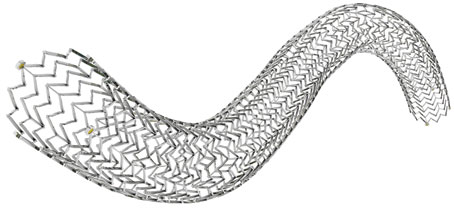
The freedom from target lesion revascularisation data, presented by Michael Dake, Stanford, USA, at CIRSE (14–18 September, Barcelona, Spain) shows that the drug-eluting stent provides longer-term results and reduces re-intervention rates by 45%.
The four-year freedom from target lesion revascularisation trial data presented on 16 September, show that 83.2% of patients with femoropopliteal lesions who were treated with Zilver PTX, did not require revascularisation after four years. This compares to 69.4% of patients treated with the percutaneous transluminal angioplasty (PTA) and a bare metal stent (BMS).
The Zilver PTX trial, a multicentre, prospective, randomised study, was designed to evaluate the self-expanding paclitaxel-coated nitinol stent as a treatment for peripheral arterial disease in the superficial femoral artery.
Dake, professor of cardiothoracic surgery, Stanford University Medical School, said: “The four-year freedom from target lesion revascularization data documents the sustained clinical benefit of Zilver PTX. When compared to standard of care therapy, consisting of either successful angioplasty or provisional bare stent placement after sub-optimal angioplasty, the paclitaxel-eluting Zilver stent provides a 45% reduction in the re-intervention rate.” Following his presentation, a number of European experts also shared their experiences with the stent and discussed why and when physicians should use drug-eluting devices to treat lesions in the superficial femoral artery.
Since Zilver PTX received CE mark approval in 2009, the stent has already been used to treat over 20,000 patients worldwide. Clinicians across the UK, and in markets including the US, Japan and Australia, now use this stent to treat superficial femoral artery lesions.
“It is exciting to be the first company to present four-year data for a stent to treat peripheral arterial disease,” said Andy Förster, EMEA leader for Cook’s Peripheral Intervention clinical division.













